You might call it harvest cider, craft cider, natural cider, artisanal cider, farmhouse cider. I call it terroir cider.
Vermont is home to a handful of terroir cider makers. There’s Eleanor Léger of Eden Ciders, Sebastian Lousada of Flag Hill Farm, Deirdre Heekin of La Garagista, Brad Koehler of Windfall Orchards, Jon and Christopher Piana of Fable Farm Fermentory, and, our focus today, Teddy Weber of Tin Hat Cider.
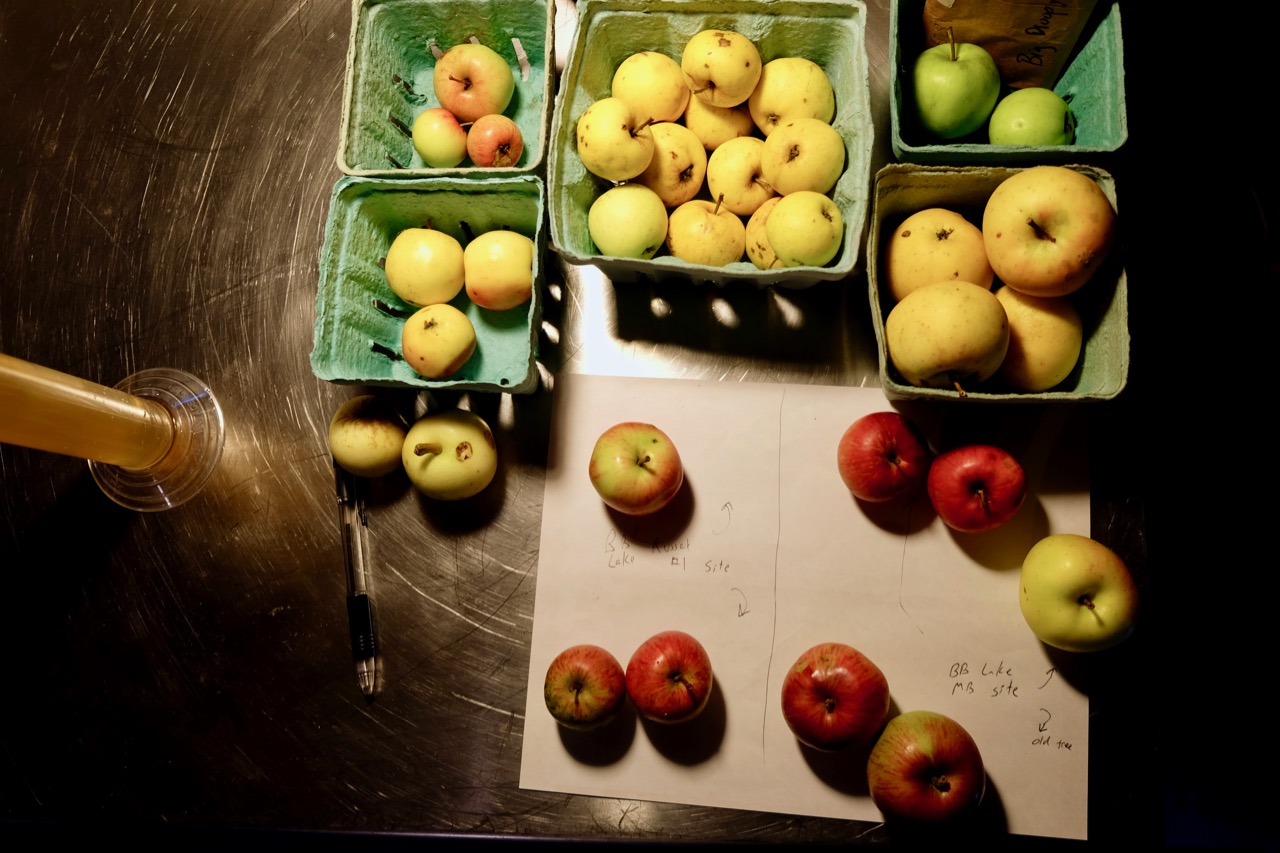
Weber’s ciders were my gateway to terroir cider. In the early fall of 2018 I wandered into Mad River Taste Place in Waitsfield, Vermont, a cheese shop and deli packed with local specialty foods. I ordered a cheese plate, and the monger suggested a cider pairing. Tin Hat’s Fipenny Bit was open that day, and she said it was made from apples grown right nearby. It was a revelation: delicious (especially with the cheese), but also infinitely complex, detailed, soulful.
As soon as I met the maker in person, it clicked. Teddy Weber is a musician, a guitarist and cornetist who’s toured internationally, opened for Dylan, and recorded three albums with the jazz-blues-folk band The Wiyos. And he’s also an orchardist and wild-apple-gatherer, a cider maker who coaxes liquid deliciousness from Vermont’s verdant Mad River Valley. Weber is himself, in a word, complex, a polymathic wilderness artist-philosopher, a believer in the power of biodiversity, and a passionate advocate for wild apples, wild fermentation, and the promise of terroir cider.
In July 2019 I interviewed Weber at the private orchard he manages in Waitsfield, and in October returned to catch up with him at harvest at his home cidery and nascent orchard in nearby Roxbury. Here’s what he had to say.
Meg Houston Maker: When you met someone new and they ask you, “What do you do?”, what do you tell them?
Teddy Weber: [laughs] I’ve lost the one-liner response from years ago: “I’m a musician.” That’s all that I did for the better part of a decade. I still juggle music projects with being an orchardist and cider maker.
MHM: Have you found recently that when you say “orchardist and cider maker,” people know what you’re talking about?
TW: I think many people hear “cider maker” and their association with cider is a can of something that was made at large scale and is more of a soda with alcohol in it. The cider market, the cider industry, has propelled itself forward following the craft beer model, so most consumers see cider as generally a sweeter, carbonated beverage that, as one reviewer told me, is “the kind of thing you’d want to drink after mowing the lawn.” And I said, “Well, I don’t mow a lawn!”
MHM: If someone then asks you what style of cider you make, what do you say?
TW: I usually just say dry. Quite honestly, it’s an evolution for me. Every year I’m changing my approach and what it is I’d like to make.

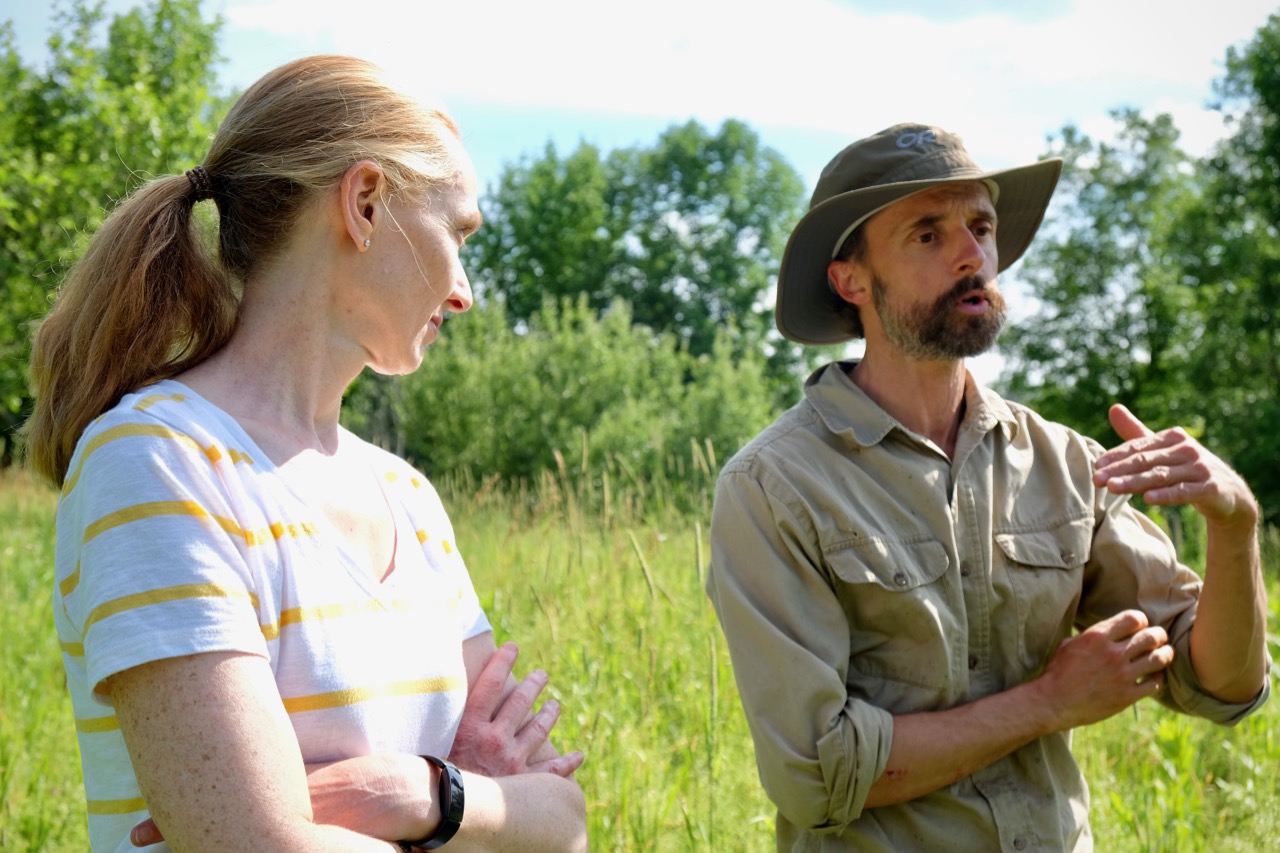
MHM: How did get your start? And what’s changing?
TW: It was a little less than 10 years ago. My first ciders were by the book, the hobbyist books. You know, you add sulfite, you add a cultured yeast, you rack it at a certain point. As soon as I decided that I was going to start a business, I started digging deeper to experiment with wild yeast and no sulfite. So, where am I going now? Definitely more towards wild yeast. I see the fermentation, it’s like a continuation of what’s going on in the orchard.
MHM: What does “natural cider” mean to you?
TW: To me it would mean wild fermented.
MHM: But not necessarily un-sulfited?
TW: I think truly natural cider would have no sulfite in it. It would just be wild fermented. I do use some sulfites. I think I would like to completely rule them out. I totally commend and respect any operation that is completely not using any. However, of all the things to demonize, I think there are a lot bigger issues than sulfite.

MHM: Tell me about this orchard. What are we looking at here?
TW: This orchard was planted in 1993 and 1994. There’s a mixture of heirlooms and disease-resistant cultivars like Liberty and Freedom. There are also wild seedlings, which on the original map were called “Elmore Cider,” plus wild trees on the perimeter which I also prune. I thought maybe Elmore was some really cool Vermont cider apple that no one seems to know about, but they were from Elmore Roots Nursery, north of here. So I called them up and got the gentleman who planted this orchard on the horn. He said the owners told him they wanted to make cider, so he gave them a bunch of seedling trees because they’re good for anything. I said, “You’ve got to be kidding me. I’m definitely the right guy!” Because before finding this orchard, I was obsessed with wild apples. I was dreaming up how I could have a business based just on wild apples. I thought, not only did I just get an orchard with a bunch of cool varieties, but there are wild apples here, too.
MHM: As mature trees, own-rooted, not grafted, and planted in this orchard along with the other varieties.
TW: Yes.
MHM: Incredible. Plus, you’re using a lot of foraged seedling apples, too?
TW: I also have a number of other sites scattered around the valley which are exclusively wild apples. Any given fall there’s probably well over a hundred individual wild trees that I’m going to assess the fruit. Some of the groves I’ve found, I’m surprised we wouldn’t consider Malus domestica an invasive, because it’s that dominant.
I think some of the most interesting apples to work with are wild apples. When you find a true wild seedling, in a true wild environment, it’s magical, because there’s no information about this apple. It’s a complete mystery. The potential for something truly unique is always there.
MHM: What are you looking for?
TW: Initially, I went out seeking these wild apples with a treasure hunting mentality. I’m looking for The One. I’m looking for something that I can propagate, that I can share with others, that will work in a low-input system that doesn’t have to be sprayed, that is not susceptible to erratic weather patterns, and is proven. If you find a tree that has survived natural selection, is doing well, is growing with relatively no disease pressure, that to me is much more proven than some French or English or Spanish cider apple that’s proven on a different continent in a different climate, and we’re going to try and propagate it here.
MHM: Was your idea that The One apple would be for varietal cider?
TW: That would be a grand slam, maybe. But initially for me it was two things. One, I felt that I could develop ciders that were truly unique to this area. Two, the trees and the orchard would be very sustainable, very low input, very no frills. If I could find trees functioning well in nature, I could duplicate that in an orchard environment, so that I’m essentially just trying to mimic nature but consolidate it for my purposes. And that model could be shared with other growers. As the years have gone on, I’ve realized that the real treasure is not in The One. It’s really in the massive biodiversity that the Malus genus, wild apples, offers us.
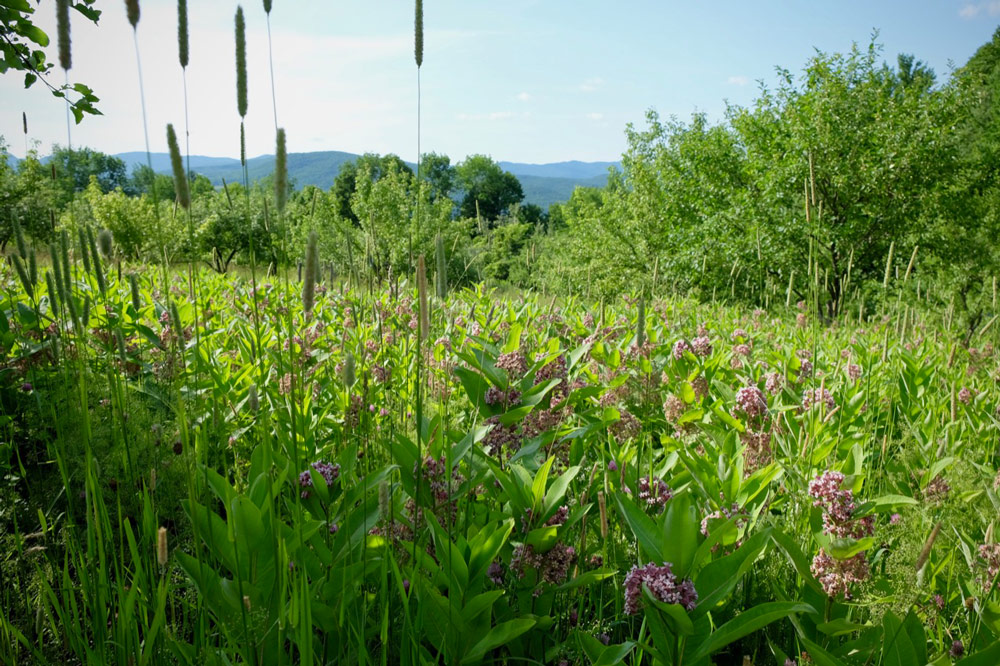
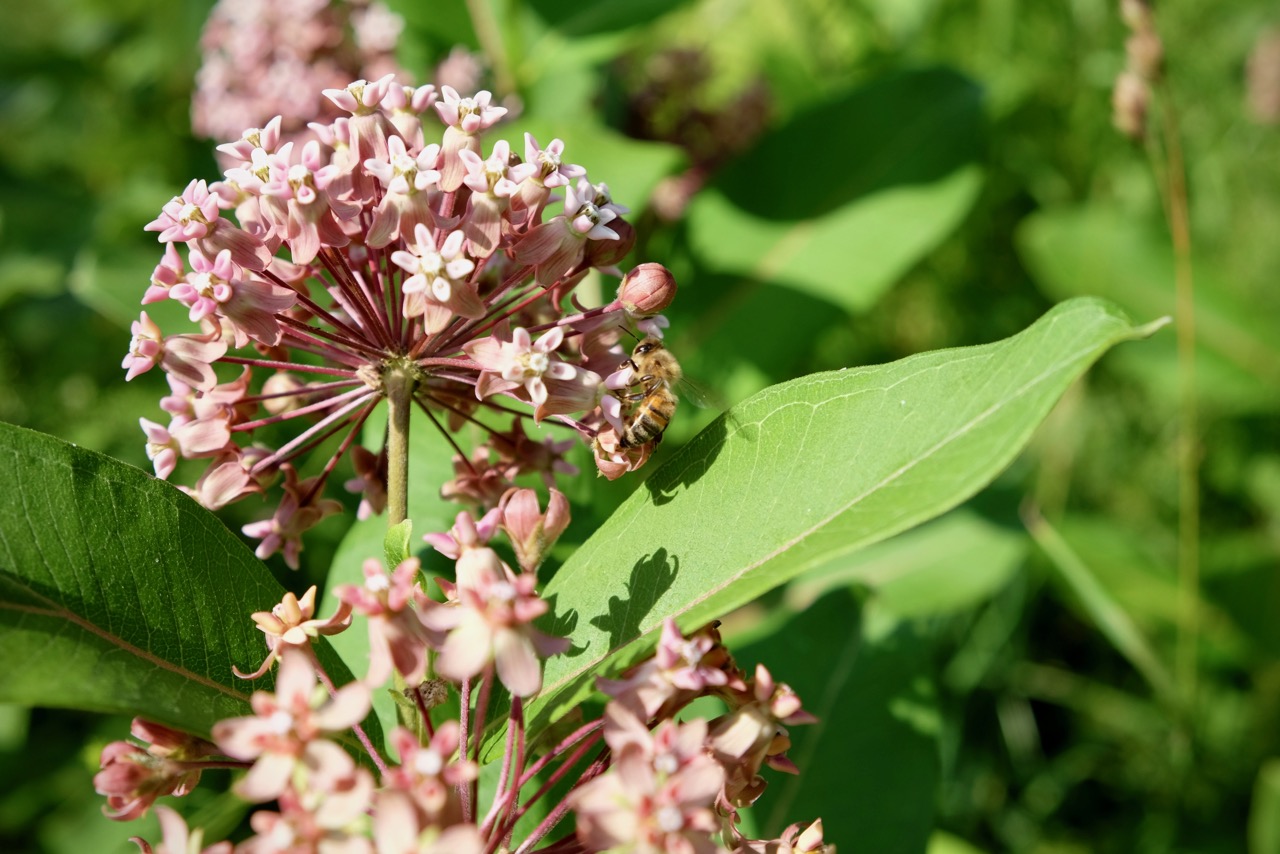
MHM: This orchard, in mid-July, looks like a natural landscape. You’re mowing only once a season, and the grasses are high, there’s milkweed flowering, bees. Tell me about your orcharding choices, about the fact that you’re leaving the understory.
TW: By leaving the vegetation, by leaving the goldenrod and the milkweed and the asters, and in spring the dandelions and the buttercups, we’re not only slowly building soil and emulating what’s happening in a natural environment, but we’re attracting beneficial insects. The more flowering vegetation you have, the more diversity in that understory, the more wildlife we’re going to attract, and all of them are going to help you in one way or another. I don’t spray anything at all. Yes, if you want to see a bunch of apple pests, they’re here! We should get a fruit-growing course from UVM to come out here, because they could see all the insects that you learn about. They’re all here! [laughs]. I’m just trying to keep their populations in check.
By going and looking at wild apple trees in a wild, unmanaged setting, I’m getting out long before the fruit is even ripe and just observe, just to see what’s going on. What insects are there? What insects are not there? What birds are there? Because I know that those trees produce these amazing apples. No one’s managing them. There’s bears get up in the tree and take the apples. There’s porcupines. Yet somehow, still, most years, there’s beautiful, blemish-free fruit that comes off of those trees. There’s a lot to learn there.
Whether you call yourself a fruit explorer, or forager, or wild gatherer, or whatever, we have a responsibility to be observant. Don’t just go out and take. Go out and observe what else is going on with these trees. Who else is using these apples? When I say who, I don’t mean what other people. What other animals? What other critters? As the years go on, I’m becoming more and more selective, because I’ve already made some mediocre cider from some of these apples, and I can say that tree is for the bears and the deer and the porcupines. That’s yours. These over here, though, I’m still working with these.
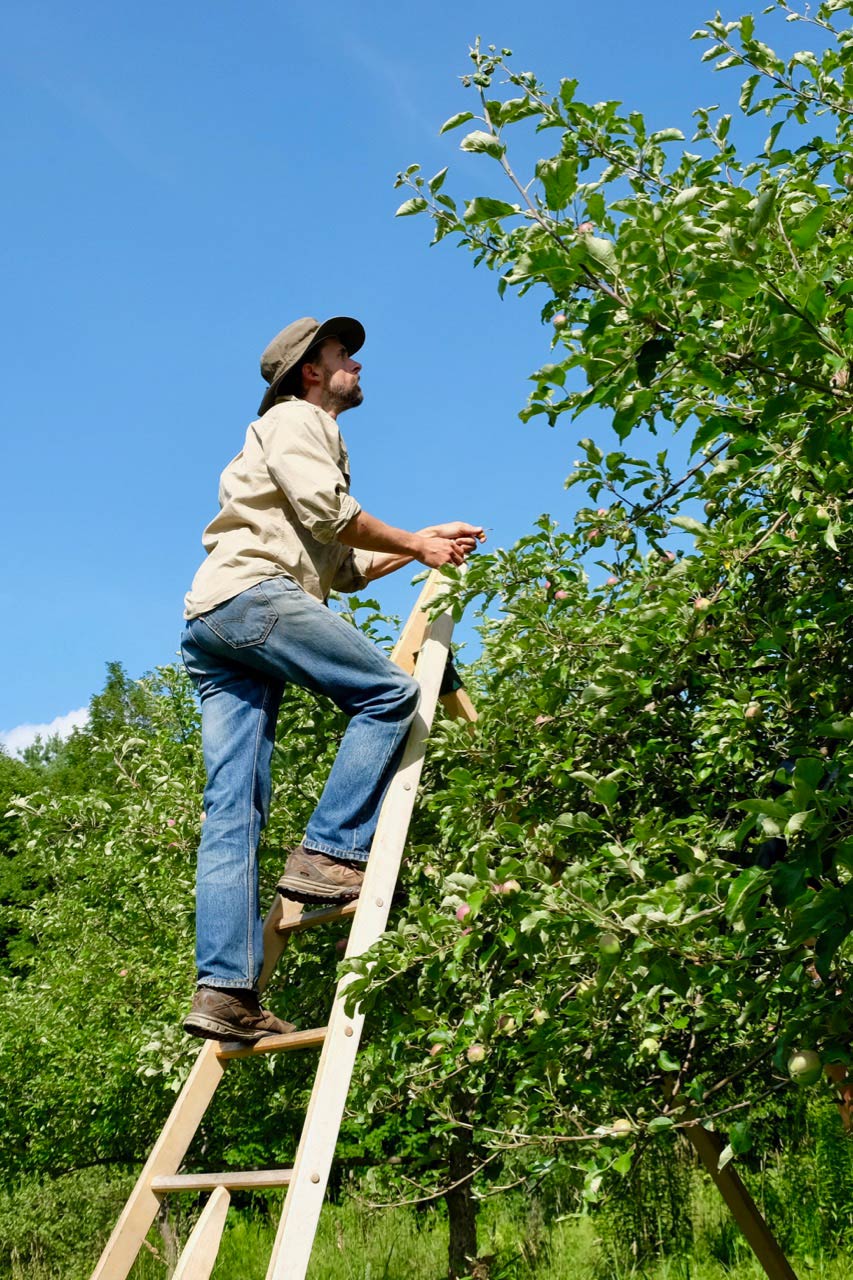

MHM: Talk about your cider making process. How do you go about coaxing the fruit into the bottle?
TW: I definitely sweat the fruit for a long time. Early season fruit a week tops, because it’ll rot so quickly, plus ambient temperatures in the cellar are warmer. The later season stuff, I’ll be sitting on it for six or eight weeks. As the years go on, I’m more and more tinkering around with maceration and with at least an initial fermentation phase with some amount of fruit in the cider.
MHM: What does maceration give you in the finished product?
TW: Complexity. It’s different with every apple. There are over 45 or so cultivated varieties here, and then just dozens and dozens of wild varieties. I’m still tinkering, I’m still experimenting every fall. By the end of Thanksgiving every year I tell myself I’ve got to knock off all this experimentation and just stick to what I know. Because it takes up a lot of energy, not to mention a lot of small vessels. It’s labor intensive.

MHM: What are you aiming at in the blend?
TW: In the ciders, is there something I’m shooting for? I would say it’s just complexity. I think the real fascination for me lies in food, honestly, in the underlying fruit itself. But that’s so fleeting. Especially the early season fruit. It’s just this moment in time. I can press it, and put it in a bottle, and then it’ll last a couple years — and it might even turn into something cooler. I see cider as a way to preserve a crop.
MHM: You’re mostly doing wild fermentation but do use some cultured yeast. Say more about how you make that choice.
TW: Some cultivars, I have a plan and a strategy with them. Liberty, for example, is not the hottest cider apple, but it takes a licking and keeps on ticking. The bears ransack those trees, the porcupines, the plum curculio — everyone wants it, yet they still produce a huge beautiful crop every year. But none of my wild fermentations have ever been very impressive on that apple, so I’ve learned to predominantly use a cultured yeast with Liberty.
The wild apples, in general, I will wild ferment. It just seems like the right thing to do. However, when I find one that just seems to fit the profile of a classic cider apple, I might use a neutral champagne yeast just because I feel like that strips away all the grace notes and all the reverb and compression and schmutz, you know?, and it just gives you the raw data.
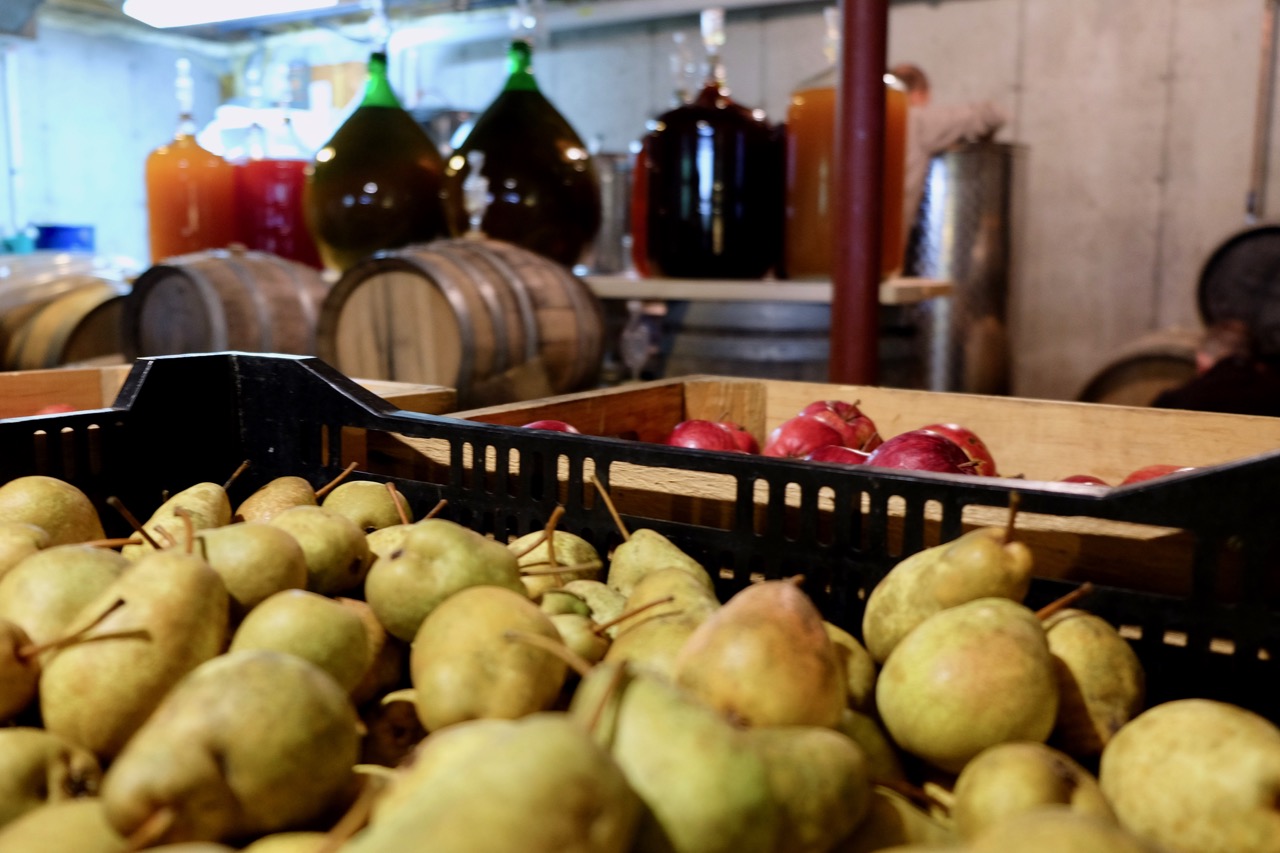
MHM: How do you think about terroir expression in your ciders?
TW: The ciders that I’m making, do they tell a story of this place? That’s what I’d like. But as far as terroir goes, I think there’s so much that we don’t know yet. Do I believe in terroir? Yes, of course. But to really put your finger on any one thing, how are my ciders different, it’s really hard to say. There’s so much variability from season to season. Also, I’ve moved my facility twice now and both times it rocked my wild fermentations.
MHM: Because the cellar is part of terroir.
TW: Yes. I think that ciders can tell a story of a place when a cider maker, an orchardist, someone gathering wild apples, someone processing the fruit, is nurturing the natural processes that are already happening. If I’m allowing the bacteria and the yeast that are present on the fruit, in the environment, in the space, to do their thing, then ultimately Yes, I think that does tell a story of your place.
What is that story? It can vary from year to year, obviously. It’s being written over time. It’s kind of like a live performance. You could capture it on video, or record it, but if you were there, that’s the real experience. Like a great jazz performance, with the electromagnetic fields going on that night, in that particular space, the vibe coming off the crowd — that performance only happened once. I think to a certain degree that can happen with these fermentations, with what’s coming in from a wild environment — this fruit coming into a space, you’re pressing this juice, the yellow jackets are there, the fruit flies are there, there’s all kinds of other insects, everybody’s getting in on the party. It only happens a certain way, once a year, but it’s unique every year. Then you ferment the juice and put it in a bottle. There’s a story in there, from that year. There’s a through-line.
MHM: In other words, the cider can be an expression of the harvest, but is not the harvest itself. The harvest was an experience that is now in the past. The cider is like a field recording.
TW: That’s a great analogy. You are in a sense making a field recording. Quite honestly, especially in the beginning, not all my ciders were that honest, given the cultured yeast and sulfite. I’m not against the use of those things, but I’m rapidly phasing them out; that’s the wild journey. Their use is kind of like taking that field recording into the studio and you’re like, let’s do a little editing, and let’s compress things, and let’s add some reverb, and how about we throw in some fake crowd noise at the end? The sky’s the limit once you get into the studio. The sky’s the limit once you open up the Scott Labs book! Anything’s possible. By choosing to only work with the raw ingredients, to only work with the natural cycles, that’s just more interesting to me.

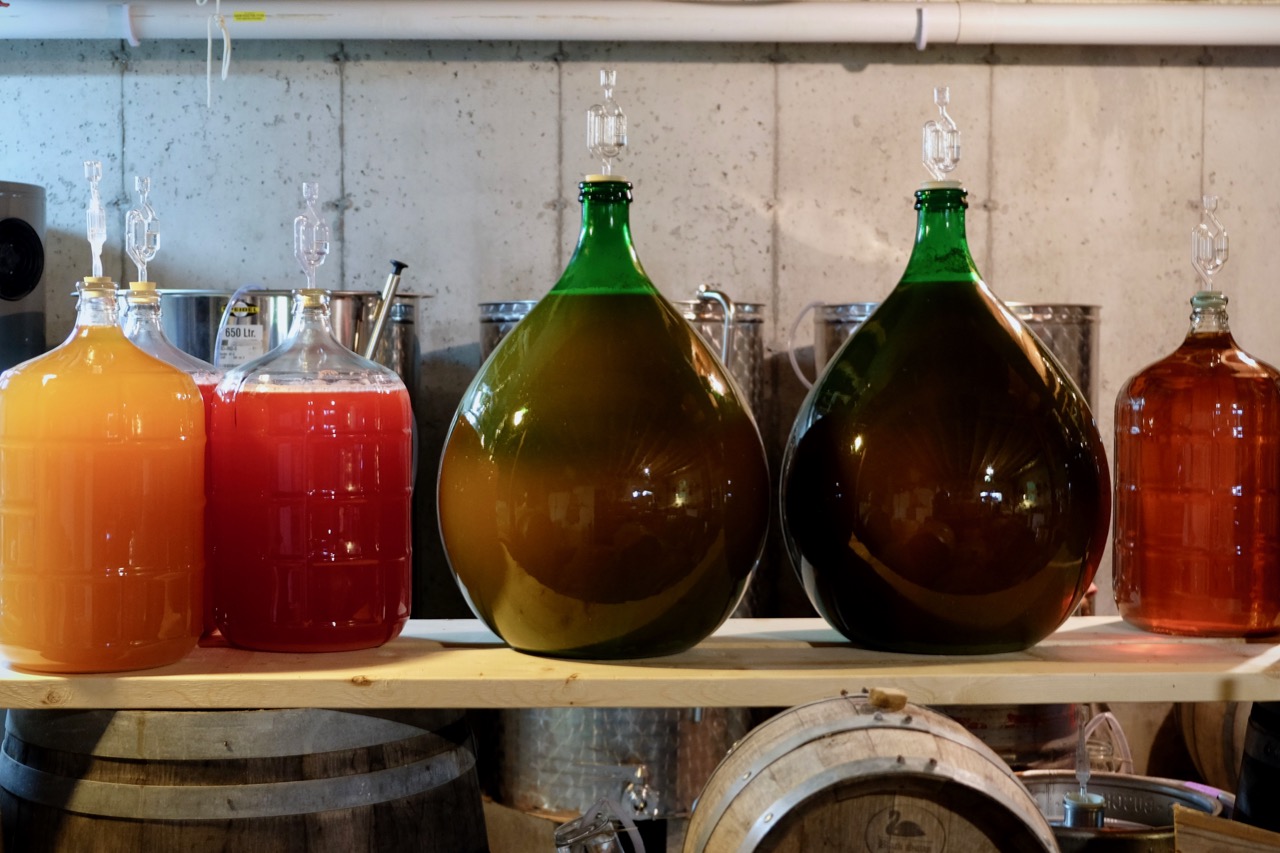
MHM: Partly what you’re talking about is authenticity. Working naturally gives you a more terroir-expressive product.
TW: The fermentation, and the resulting cider from the fermentation, is really a continuation of what’s going on in the orchard, from a biological standpoint. And that’s what I’m hoping to convey in a bottle of cider. And is any of this playing a part towards preserving biodiversity? I’d like to think so. As the years go on, I hope to develop that more and find that I’m not just making alcohol. I’m finding a way to have a little more harmony with the natural world. For some reason, it seems like apple people are drawn to that. Unless that’s just who I’ve surrounded myself with, I don’t know. In the wine world, are there people like that?
MHM: There are, in the dark, shadowy corners [both laugh]. You can’t use wild-foraged grapes. You can do less manipulation in the cellar, you can avoid the lab book. That’s really the kind of wine I care about. Lower alcohol, lower input, more complexity, more interesting.
TW: I do see cider as wine, it just has this name, “cider,” because it has a deep rich history. It’s all the same.

MHM: Any final thoughts?
TW: As orchardists and as cider makers, it’s our job to observe. To get out there and see what is going on. And sure, there’s a lot of things that we can’t see, that we can read about in the books — how these trees communicate, how these insects communicate, what’s going on with the other non-apple trees in the area and how does that affect the squirrels, and the porcupines, and the deer, and the bears? How’s that going to affect your apples this year? All this plays into the uniqueness of each year, of each vintage. How does that come out in a glass of cider at the dinner table? That’s for each listener to hear. That’s each person’s individual perception.
These are all the things that are on my mind as a maker, as someone who’s trying to respect nature, respect the natural world. How can I do that, put it into a bottle, preserve that year’s crop, and have it be something that’s enjoyable for years to come?
Tin Hat Ciders on Terroir Review
Tin Hat Fipenny Bit Dry Cider
Tin Hat Ole Pome Still Dry Cider
Tin Hat Farmhouse Dry Cider
Tin Hat The Woodshed Series Batch 17B Dry Cider
Tin Hat The Woodshed Series Batch 17C Dry Cider
This interview was edited and condensed.
Many thanks to Wine Business and Wine Industry Insight for recommending this article to their readers.

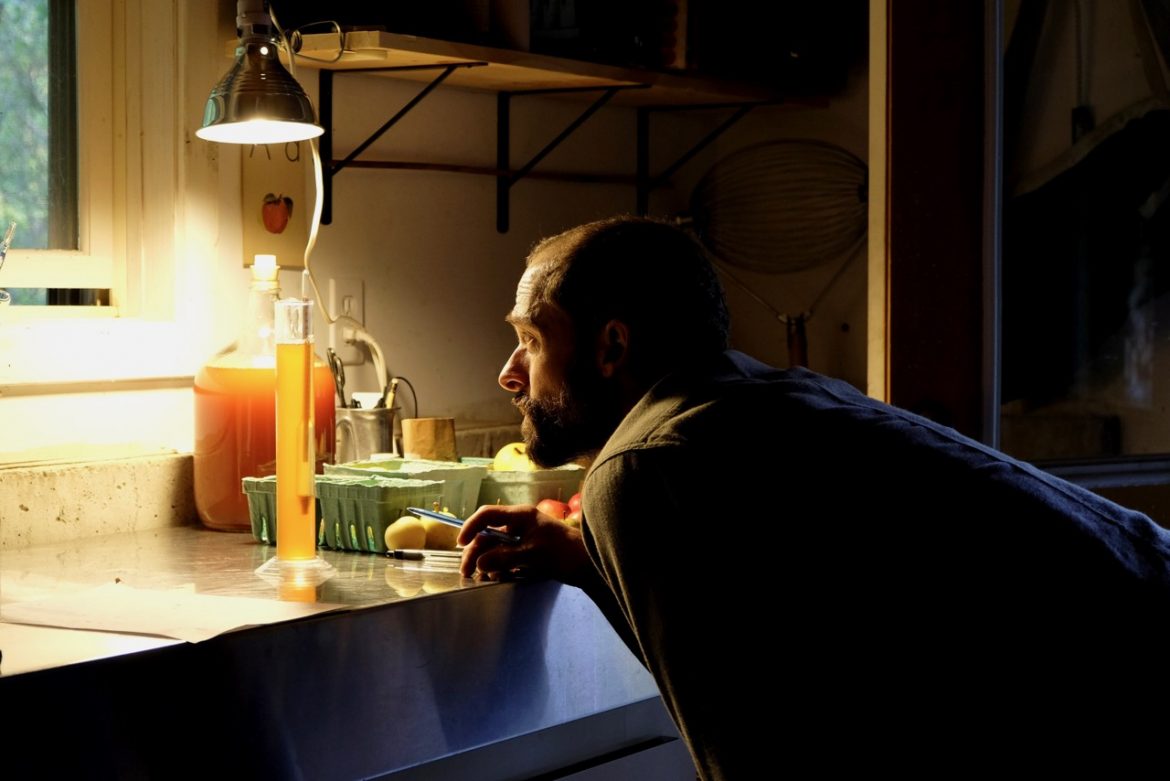

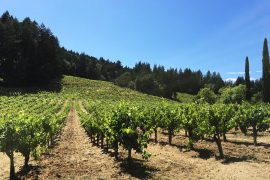

Wonderful interview. Of course now I am thirsty.
Thank you, David, for reading. Hope you can get your hands on some of Teddy’s ciders one day.